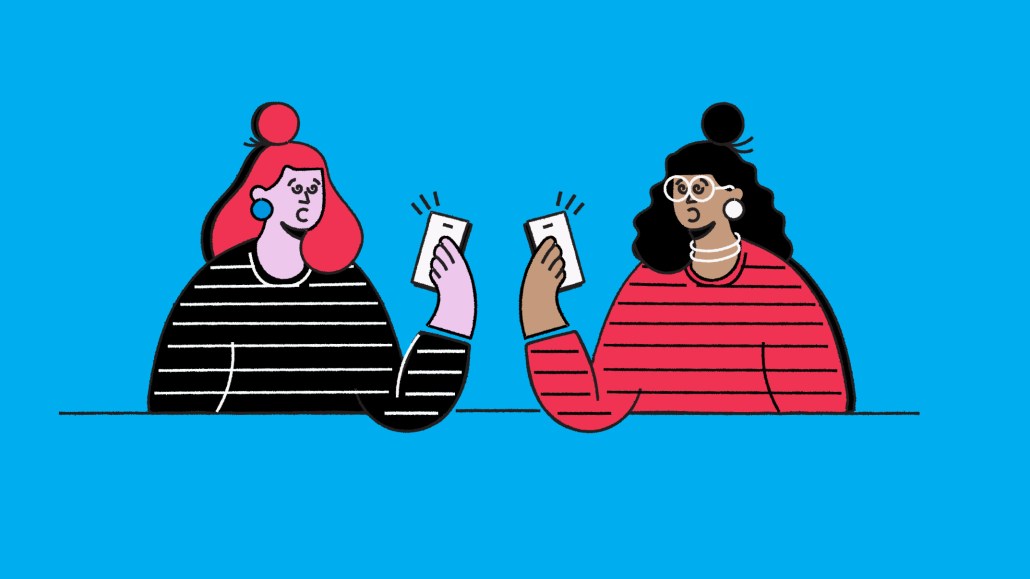‘A symbiotic relationship’: Why social media platforms are getting in front of the growing creator economy

Social media platforms are betting big on creators, rolling out programs to streamline dealmaking between creators and advertisers. It’s a move that could keep creators, advertisers and ad dollars circulating within the platform ecosystem.
Platforms like Clubhouse and Instagram have announced new creator programs complete with funding, programming and matchmaking-style features for creators and advertisers. The latter is similar to what an influencer marketing agency does.
Marketers say the initiatives could streamline the influencer, advertiser relationship, and expand platform ad offerings. Jordan Fox, who serves as head of the full-service agency Laundry Service, is especially keen on TikTok’s work with creators.
“[TikTok] in a really great position to upsell influencer partnerships because they’re already doing business with advertisers directly, and they have proprietary access to their own pool,” he said. “I feel like they’ve packaged influencer selection services into their overall offering in a very skillful and effective way.”
Just last week, Instagram launched its first Creator Week in a bid to capitalize on the growing creator economy. The three-day streamed event included panels, competitions and sessions with platform executives. Instagram is the latest platform attempting to woo and court creators.
And earlier this month, live audio social app Clubhouse welcomed its inaugural Creator First class, offering equipment, a stipend of $5,000 per month, per show and guidance from Clubhouse leadership. TikTok too threw its hat in the ring last year after introducing its $200M TikTok Creator Fund and even a three month creator incubator program for Black creatives. Snapchat and YouTube have similar programs in place.
According to marketers, these are just the latest iterations of the platforms’ push to build out creator-friendly ecosystems, keeping pace with brands that are moving influencer marketing into a core strategy.
“There are more potential monetization opportunities than ever before for creators, and that’s because they’ve proven over the last few years that they are driving business for brands and platforms alike,” said Victoria Bachan, managing director of influencer marketing agency Whalar’s creator management division, Whalar Talent.
The programs are a natural extension of dealmaking that was already happening on the platforms as many had links to Venmo, Cash App and others in their bios, per Stephanie Simon, head of community, creators and partnerships at Clubhouse.
“What we’re doing is laying the groundwork for what a relationship and what the marketplace between creators and brands and talent will look like,” she said. “It’s not about just making lump sums of cash. It’s about sustaining or evening out what a career as a creator can mean.”
Per Simon, what’s interesting about Clubhouse’s offering is that the platform offers a monthly stipend and facilitates dealmaking without taking a portion of creator earnings. It differs from TikTok’s Creator Fund, in which funds are dolled out based on video performance and other factors, per TikTok’s blog. According to tech news outlet The Information, Instagram has yet to explore an official creator fund in addition to Creator Week.
However, not all creators are leaning into these programs.
Recently, full-time influencer Justina Sharp opted out of TikTok’s creator fund. With the push to build creator ecosystems, she’s worried about the platforms positioning themselves to take a cut of creator earnings. For a post with more than 5 million views, Sharpe said she made just $36 via the TikTok creator fund and questions how payment is determined. It’s unclear how TikTok determines rates aside from video views, which has been critiqued in addition to its mysterious algorithm. (TikTok did not respond to Digiday’s request for comment.)
With more than 10 years of experience in the influencer space, Sharp said she’d rather continue to do dealmaking with brands herself, setting her own rate.
“That’s just you trying to edge between me and the money I’m making off of this platform,” she said.
Cypress Villaflores, associate director of paid social at Mediahub, noted similar worries about TikTok’s program, but said creator funds, like the offerings of Instagram and Clubhouse, generally offer a steady stream of income for creators and user engagement for the platform. Seemingly, it’s a win-win.
“Technically, it’s like a symbiotic relationship,” Villaflores said. “[Creators] bring people to the platform. It increases my monthly users, increases my daily users and [advertisers] give you money for doing that.”
More in Marketing

Pitch deck: How Amazon is recasting Twitch as a core part of its CTV pitch
Amazon is positioning Twitch as a defining asset in its CTV ambitions.

Netflix transforms former mall department stores into experiential venues
The location in Dallas opens this week, and one at the King of Prussia mall near Philadelphia opened last month.

Future of Marketing Briefing: AI has created a new talent paradox in programmatic agencies
The job isn’t execution anymore. AI handles that. The job is judgement.







